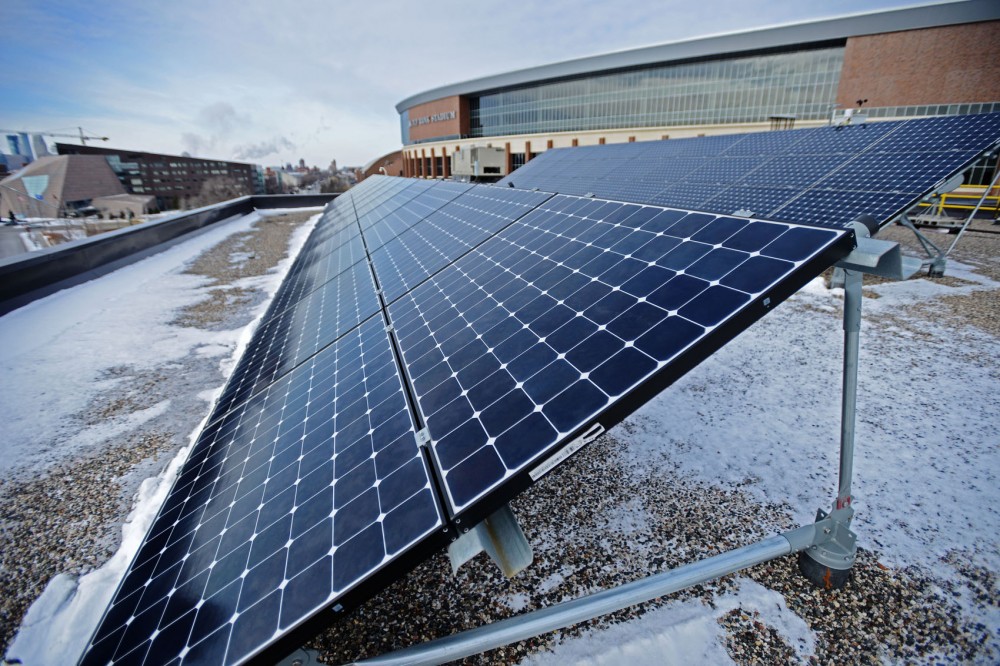Solar panels, vegetation and buzzing bees could all appear on Southeast Como roofs this summer.
The Southeast Como Improvement Association received a $3,000 grant from Clean Energy Resource Teams, or CERTs, to survey all of the unused flat roof space in the neighborhood and Mid-City Industrial area and to gauge property owners’ interest in installing the three options on their roofs.
SECIA has partnered with Minnesota Community Solar and the Minnesota Green Roofs Council to act as a matchmaker between willing property owners and sustainable technologies.
SECIA neighborhood coordinator Ricardo McCurley said the project began with a connection between the SECIA Environmental Committee and Minnesota Community Solar. The groups wanted to install solar panels in the area but realized they didn’t have to stop there.
“Solar isn’t the only game in town when it comes to unused roof space,” he said.
To broaden the idea, McCurley said SECIA reached out to AD Greenroof LLC to include green roofing in the project and started discussing possible roof farming models and beekeeping.
“Out of all of that came this project, and we started tailoring the project for the CERT grant and for a broader idea,” he said.
SECIA will conduct aerial surveys this month to determine what options — solar panels, green roofs or beehives — are most fitting for each space, depending on weight capacity and roof access.
Similar projects in Minneapolis include the Target Center’s vegetated roof and solar panels on the Minneapolis Convention Center, the Seven Corners Apartment building on the West Bank and Fire Station 19 in Stadium Village. University of Minnesota buildings such as Ralph Rapson Hall and the University Office Plaza Building also have solar panels.
SECIA has also applied for a Green Infrastructure grant from the Environmental Protection Agency, which would allow the group to install more green roofs in the near future.
While Minneapolis residents need a permit to have a beehive in their garden, a permit is not necessary for beehives kept above two stories.
“The neighbors will benefit from the added pollination to their gardens,” McCurley said. “If you’ve got a good working beehive even within a mile of your garden, you’re going to see upticks of anywhere from 50 to 200 percent in your production.”
Erin Rupp, co-owner of Beez Kneez, a local honey bicycle-delivery business, said bees with a hive on a roof won’t negatively interact with humans like they could if the hive was on ground level.
“Their hive is their home, so if their entrance is up three stories, it means that they’re not going to bother anyone,” she said.
Rupp said she hopes the project will raise awareness of the struggling bee populations.
“These days it’s really hard to be a bee,” she said.
The project’s overall goal is to get about 10 to 15 businesses interested and conduct in-depth analyses of their properties for the purpose of installation, McCurley said.
University bioproducts and biosystems engineering sophomore Emma Volbrecht, an intern on the project, said she hopes the effort will inspire residents to become more aware of the sustainable options available to them.
“I think it gives the community some hope that there are ways to improve the neighborhood and the community as far as aesthetics, energy solutions and water solutions,” she said.

















